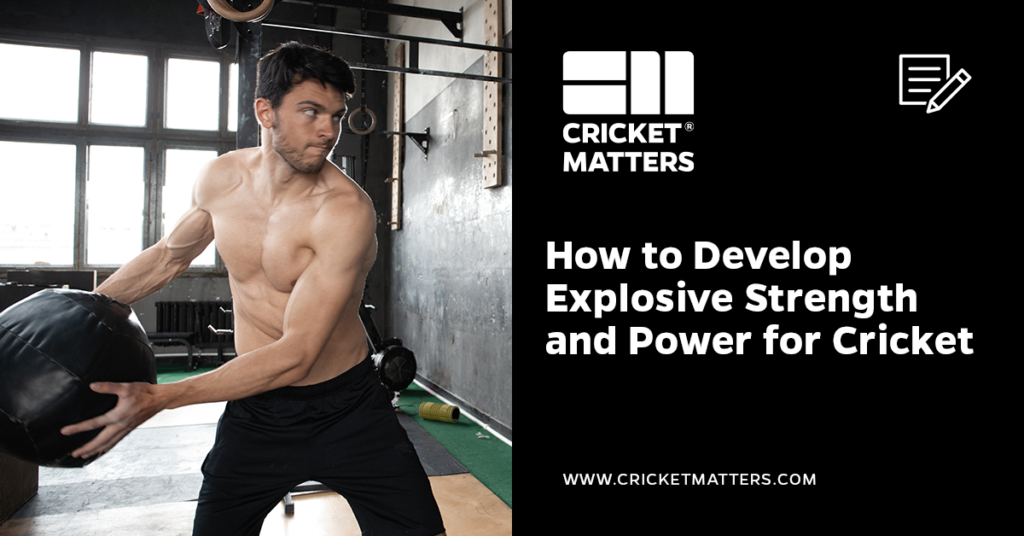
I hope you enjoy reading this blog post.
James Breese, Cricket Matters FounderIf you need my help with cricket coaching, strength and conditioning, injury rehab, or nutrition, click here.
This is your ultimate guide to deadlifting for cricketers, a powerhouse exercise that should be a part of evert cricketer’s training plan.
Having coached the deadlift to thousands of athletes over the past 15 years, here’s everything we know about deadlifting for cricketers and how to approach it.
Heavier is not always better. Here’s why.
Table of Contents
As a cricketer, you know the importance of having a strong and balanced physique.
Deadlifting not only improves your overall strength, but also helps with injury prevention by promoting stability and power in your movements on the field.
This ultimate guide will cover the basics of deadlifting, why it’s important for cricketers, and provides you with tips and techniques to help you get the most out of this exercise.
Whether you’re a beginner or an experienced lifter, this guide is perfect for any cricketer looking to improve their strength and performance on the field.
Introduction
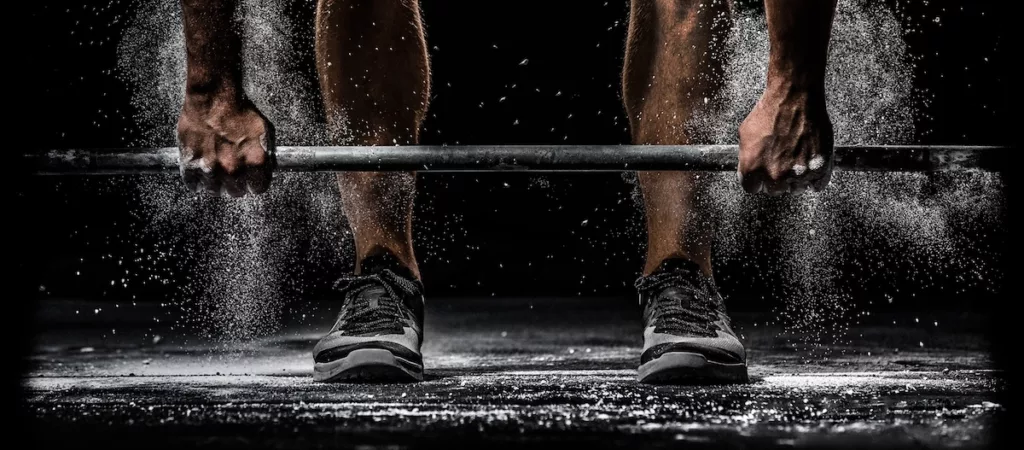
Can you feel the testosterone in the room already?
The mighty deadlift. The king of all lifts. My mind conjures images of bearded men snorting smelling salts with the sounds of clanging plates and heavy grunts every time the bar is picked up and banged back down to the floor.
There is just something primal about deadlifting heavy sh*t.
The deadlift is arguably the most instinctually satisfying weightlifting exercises on the planet and is quite possibly the most common test of strength.
It works the whole body and can transform the human physique into a well oiled machine. It’s part of the hinge family – one of the fundamental human movements.
When we hinge (bend over), we use the biggest and most powerful muscles in the body: The glutes.
Of all the compound exercises, the deadlift is insanely effective at helping practically anyone to achieve their goals and feel better, whether they’re an elite cricket athlete, club cricketer, or desk jockey who just wants to lose weight.
This is one of the must-have lifts for any strength training program – without it, you leave serious gains and results on the table.
However, to fully enjoy the satisfaction and athletic benefits of the deadlift, and use it as an injury-free training tool, you will need to spend some time learning how to perform it correctly.
There is a lot more to it than picking a bar up off the floor. In this article, we’ll cover how we approach the deadlift from every angle and leave you with our best performing deadlift training plan – ever.
Deadlifting Starts with Your Ability to Hinge
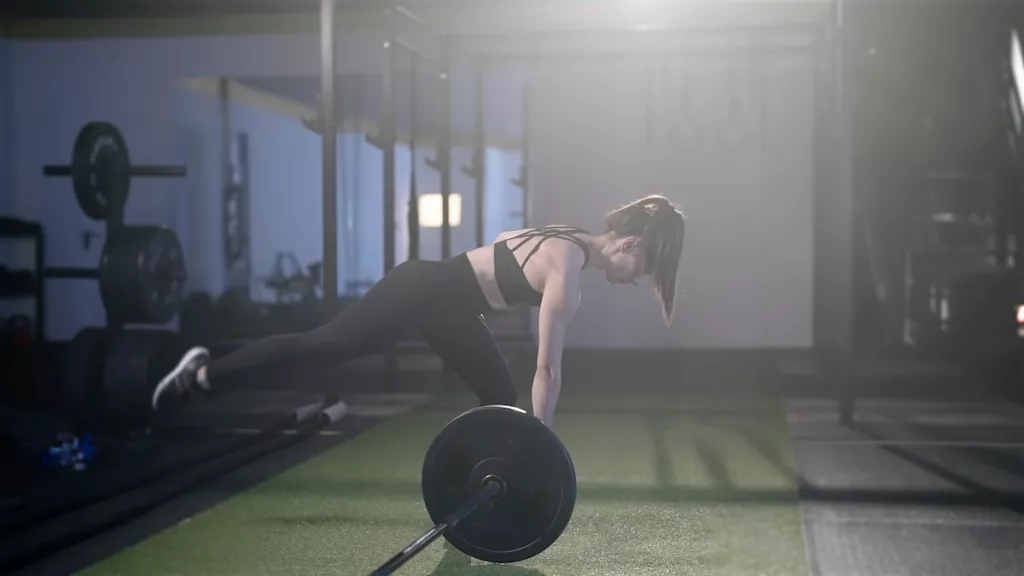
The hip hinge, a fundamental human movement pattern, but a movement that so many cricketers simply cannot perform.
Modern day life has got the best of them and completely inhibits their ability to perform this movement.
After spending roughly 10 hours a day in the seated position, for years on end, we tend to forget how to do this important movement.
The seated posture causes restriction and tightness in the hips and has a direct negative effect on the body’s ability to hinge.
The common problem that occurs with most cricketers, because of the restriction in their hips, they tend to squat the hinge.
In a squat, the knees move forward as the hips move down. In the hinge, the hips move to the rear, not down.
What happens when the hips are tight is we start to initiate the movement through spinal flexion instead of through hip flexion.
The issue with this is that the low back muscles are designed to be short movement, slow contraction, and long duration holders versus the glutes which are the most powerful muscles in the body that are designed to get the job done.
This can lead to back injuries if the movement pattern is not corrected. Keeping the lower back neutral while the hips do the moving is key to both the hinge and our overall back health.
And how many cricketers do yo know with back problems?
Many times, tightness in the hips is the result of tightness somewhere else. When we develop deadlift training plans, we use a joint by joint approach first coined by physical therapist Gray Cook.
Using Cook’s analogy:
You see the ankle has to be mobile so the knee can be stable. If the knee is stable, then the hip can be mobile.
Gray Cook, FMS
If the hip is mobile, then the back can be stable. If the back is stable, then the thoracic spine and shoulders can be mobile.”
If any one of these joints get locked up, it can play havoc on any one of the others; therefore, understanding why you can’t perform the hinge from a mobility stand point is imperative, because maybe your inability to hinge correctly, is because of a mobility restriction elsewhere.
Are You Ready to Deadlift?
So, you’ve decided you want to attempt the almighty deadlift – awesome!
However, before you go running down to your local gym and jump on one of those fancy lifting platforms, let’s establish some core fundamentals first.
Similarly to how we discussed squatting in our guide to explosive leg strength for cricketers, with deadlifting, the bar will always win. You keep loading more and more weight until you eventually crumble.
I’ve seen so many unnecessary injuries from barbell training because of that urge to keep going heavier.
There is always a fall after the peak, and it’s never a pretty sight. I’m not saying you should never use a barbell to deadlift but you do have to build up to it.
You need to know where you are on the deadlift continuum and earn the right to take it on.
Before we get to the semantics of what type of hinge exercise is right for you, we need to determine if you are ready to start a real deadlifting program.
Here at Cricket Matters, we determine this by assessing your basic mobility and strength levels.
We have a key mobility assessment that measures one’s ability to hinge:
| Test | Directions | Standard |
| Hip Hinge with Dowel | Hold a dowel/stick behind you with it touching three areas: The sacrum (just below the low back), between the shoulder blades, and directly behind the head. Flex forward at the hip with a slight knee bend. Hold for a moment, then return to standing. The dowel must remain in contact wiht the head, thoracic spine, and sacrum at all times. Ideally you will hinge back until you are close to a 45° angle. | Five Reps @31X0 Tempo |
The hip hinge with dowel test is not a drill where you just fold forward at the waist; the knees must bend at least 15 degrees as you hinge in order to activate the glutes.
This should happen naturally as you push the hips back. They should not move forward though, either on the way down or as you stand up – remember that’s squatting.
You will hinge until your back is close to or past a 45 degree angle.
Imagine you are standing on a clock face with six o’clock right beneath you. Push your hips back aiming for seven or eight o’clock.
You’ll know you’re doing it right when your glutes and hamstrings start to feel loaded and tight. Do not lose contact with the dowel!
The hinge pattern is part of so many functional movements.
If you don’t own this basic mobility pattern and you start to add load, you’re just loading weight onto dysfunction and opening up yourself to a world of potential injuries.
If you’re unable to hit this standard, it doesn’t mean we won’t get you deadlifting, it just means we first need to focus on improving your hinge pattern and addressing the potential mobility restrictions in your hips, ankles, and thoracic spine.
Is this safely achievable? Yes or no.
When it comes to determining strength levels and your capability to deadlift, we look at the results of the following four tests combined with your hinge assessment:
- Straight Arm Plank: Two Minutes
- Glute Bridge: Two Minutes
- Straight-Arm Bar Hang: One Minute
- 75% Bodyweight Farmer Carry: 90 Seconds
Integrity under load is more important than the ability to lift load. Working muscles without properly engaged postural stabilizers leads to poor alignment and poor stability.
These four tests allow us to ensure this requirement is met.
There’s nothing elite about these strength assessment numbers but hitting them will put you in good stead before you even attempt to deadlift, even if you have no desire to become an elite powerlifter.
If you do aspire to venture into the elite fields of deadlifting, they provide a solid starting point to make sure you have the basics in place before attempting anything more complex.
Never skip the basics in strength training! I promise it will save you from years of hurt and frustration.
The Deadlift Continuums
Once you achieve both the mobility and strength standards, then we can look at exercise selection through the eyes of the deadlift continuum:
| Mobility First | Strength Building | Advanced Athlete |
| – Six-Point Rocking – Resisted Rocking – Glute Bridge – Single Leg Glute Bridge – Kneeling Hinge – Kneeling Hinge with Step – Emerging Pattern – Half Kneeling Windmill – Standing Hinge – Prop Guided S/L Hinge – S/L Hinge – Pop and Stop | – Bulgarian Goat Bag Swing – Loaded Half Kneeling Windmill – Kettlebell Suitcase Deadlift – Kettlebell Deadlift – S/L Kettlebell Deadlift – Kettlebell Windmill – Trap Bar Deadlift – Kettlebell Swing (2-Hand) – Vertical Jump – Long Jump | – Kettlebell Swing (1-arm) – Kettlebell Clean – Conventional Deadlift – Sumo Deadlift – Barbell Suitcase Deadlift – Light Plyometrics – Box Jumps – Kettlebell Snatch – Double Kettlebell Work – Advanced Plyometrics – Olympic Lifts |
The continuum will help you identify deadlift exercises you can do safely based on your current ability level, and then allow you to progress safely along the deadlift continuum.
Barbell work is at the far end of the continuum for the reasons explained above.
In all honesty, most cricketers will only ever live in the mobility and strength building areas, and that’s ok, as cricketers can get wicked strong with just these exercises.
Why We Prefer the Trap Bar Deadlift for Cricketers
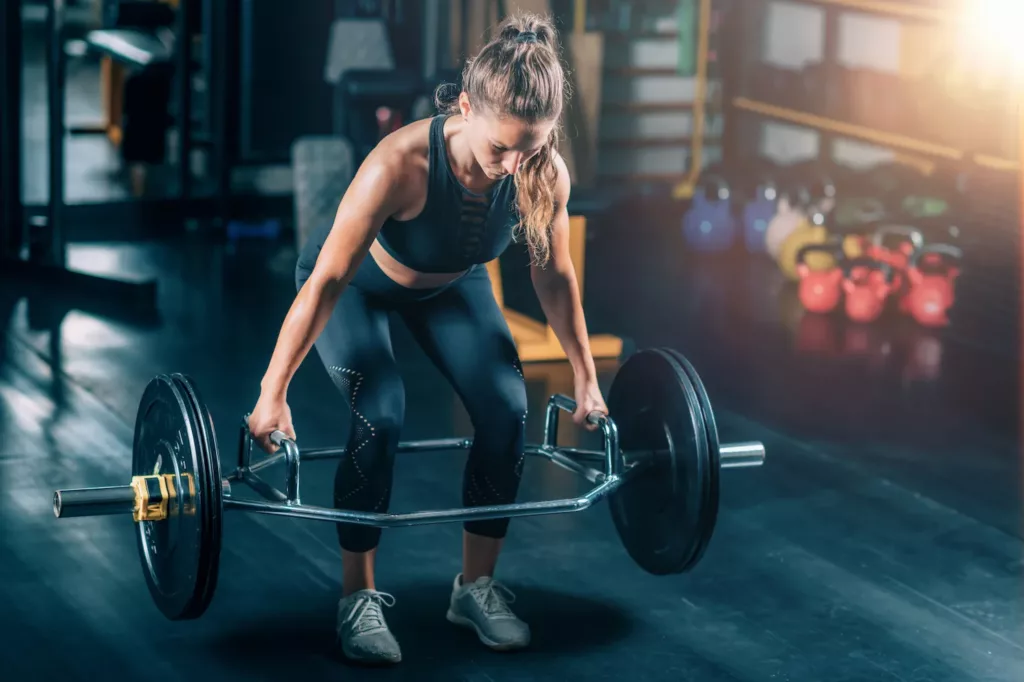
I haven’t always been a fan of the trap bar deadlift.
I was quick to shun it, as were several of my friends/peers in the powerlifting community, as loyal devotees to the barbell.
As I’ve continued to lift over the years and the more I’ve coached cricketers, the more I appreciate the trap bar.
I might be slightly biased on this aspect from a personal perspective – not once (touch wood) have I been injured pulling heavier weights on a trap bar, compared to multiple times pulling conventional.
I just find I get myself into a better position, I can lift more and for the team sports and endurance activities that I do, it has a huge carry over effect to these more athletic qualities, particularly speed and power.
I’m not alone here, there are many other great coaches in the world of athletic sports who feel the same way.
The trap bar places you inside the bar, reducing the stress on your lower back while increasing the potential for power production.
With barbell deadlifts, you are limited—and some people, particularly tall bowlers, are going to be really limited—by limb length.
Mastering the straight bar deadlift can be a frustrating and painful process for many people, the trap bar is much more user-friendly.
With good hinge movement and the prerequisite strength and mobility, I can coach someone the trap bar in a matter of minutes – compared to months with a barbell, which can be extremely technical.
Research has found that trap bar deadlifts allow for faster bar speeds at identical loads and greater maximum loads, which makes sense given their superior mechanical advantage.
The only reason I would now use a conventional straight bar deadlift would be for someone who is looking to perform a powerlifting meet, or for suitcase barbell deadlifts. That’s it.
I personally think the trap bar deadlift is the better option for cricketers. It allows more flexibility in the movement, doesn’t require a mixed grip, is easier to learn, and is generally safer.
Deadlift Training Plan for Cricketers
To be clear, this program is mostly for cricketers who are right of center on the deadlift continuum.
If mobility is your number one issue, we need to address that first, no exceptions. Likewise, if you don’t have essential strength test measurements, you need to get them locked down.
Earn the right to do this and you’ll thank me in the later part of your life.
This is a nine-week deadlifting programme for cricketers that should be performed two times a week (in the off-season) and at the start of your workout when you’re fresh, not the end.
We find most cricketers don’t need to spend that much time in the world of max power.
For us, it’s about building your strength battery which allows you to recover faster and expand your limits.
This workout is best performed with a trap bar but stronger, more advanced cricketers can also perform this with a conventional barbell.
It’s very much a volume and density-based program so you’re going to deadlifting a lot. Keep that in mind.
Before you start, you will need to test your one rep max deadlift.
Our advice, for safety purposes, is to figure out your five rep max lift then multiply this number by 1.15 to estimate of your true one rep max.
Over the years, I’ve just found this to be a much safer option for cricketers. The more we chase true one rep maxes, the higher the chance of injury.
The Ultimate Deadlifting Workout for Cricketers
The Workout: 10 minute EMOM
70 percent of one rep max, Trap Bar Deadlift @ Set # reps
At the end of the 10 minutes immediately execute set # reps
The weight for the duration of this program will remain the same. You will be using 70% of your calculated one rep max.
You will not be adding weight at all during the entire nine-week program.
Yes, you read that right.
We will not be adding weight.
- Week 1: 1 rep per minute @ 70% then immediately 5 reps @ 70% (15 reps)
- Week 2: 2 reps per minute @ 70% then immediately 6 reps @ 70% (26 reps)
- Week 3: 3 reps per minute @ 70% then immediately 7 reps @ 70% (37 reps)
- Week 4: 2 reps per minute @ 70% then immediately 6 reps @ 70% (26 reps)
- Week 5: 3 rep per minute @ 70% then immediately 7 reps @ 70% (37 reps)
- Week 6: 4 rep per minute @ 70% then immediately 8 reps @ 70% (48 reps)
- Week 7: 3 reps per minute @ 70% then immediately 7 reps @ 70% (37 reps)
- Week 8: 4 reps per minute @ 70% then immediately 8 reps @ 70% (48 reps)
- Week 9: 5 rep per minute @ 70% then immediately 10 reps @ 70% (60 reps)
It’s highly likely in the first couple of weeks you’ll think this weight is too light, but keep with it. Stick to the plan; I assure you it will get harder.
A wise man once said, “There is much growth in comfort,” and this plan is all about that.
At the end of the nine weeks, give yourself a few days rest and re-test your five rep max.
You might be surprised by the results.
Final Thoughts: Deadlifting for Cricketers
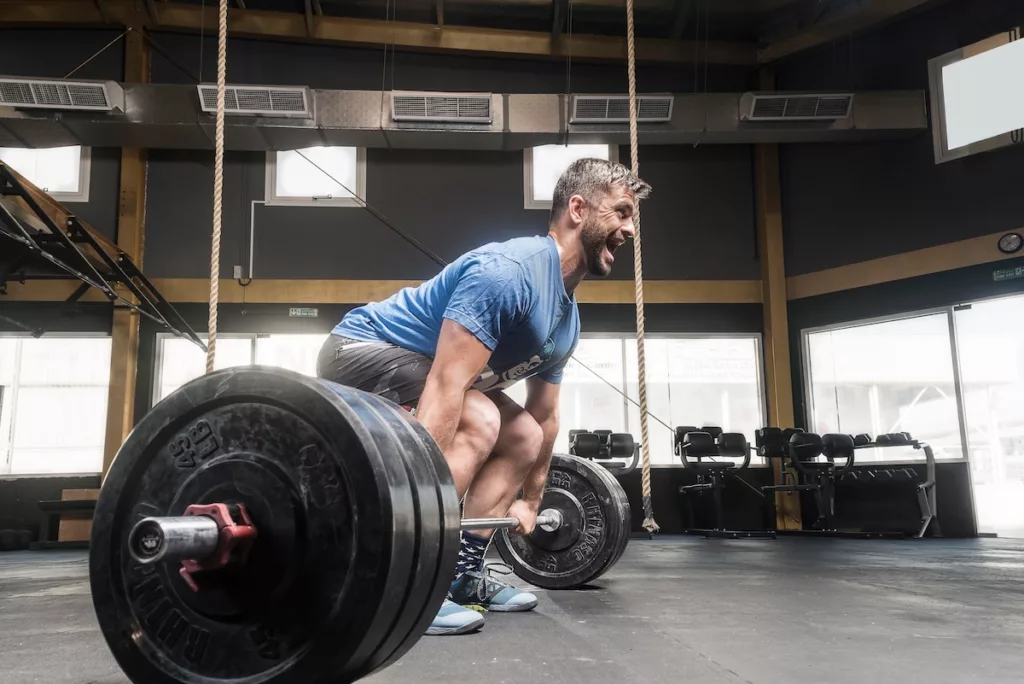
Perfecting your hinge and working on your deadlift will develop one of the most powerful human movements.
There are important milestones that you must hit before rushing to a barbell that will keep you safe and injury free.
If your goals are to:
- Build muscle and get stronger, deadlifts will get you there faster.
- Hit the ball harder and further, deadlifts will get you there faster.
- Bowl faster, deadlifts will get you there faster
- Become more athletic cricketer, deadlifts will get you there faster.
- Become a badass cricketer, deadlifts will get you there faster.
Deadlifting is an amazing excercise for cricketers.
We insist on good levels of mobility and strength before even attempting heavy deadlifting, both as a safety measure and as a means of progressing through the continuum.
Barbells are an excellent tool but we use them sparingly.
There are a plethora of alternative methods that can get cricketers just as strong, just as fast (and sometimes faster).
Enjoy the deadlifting program, and let us know how you get on.
Further Reading
Read This:
FAQs
Why is Deadlifting Beneficial for Cricketers?
Deadlifting strengthens the posterior chain muscles, crucial for cricket. It enhances lower body strength, improves explosive power, and increases core stability, aiding in better batting, bowling, and fielding performance.
What’s a Good Deadlift Weight for Cricketers?
For male cricketers, a good benchmark for deadlift weight is around 1.5 times their body weight, while for female cricketers, it’s about 1.25 times their body weight. However, lifting beyond these benchmarks can become a risk-reward issue, as excessively heavy lifting may not necessarily translate into improved cricket performance. It’s crucial to balance strength training with other aspects of cricket fitness.
How Does Deadlifting Improve Cricket Performance?
Deadlifting improves muscle strength and power, essential for quick movements in cricket. It can aid in more powerful shots, faster running between the wickets, and dynamic fielding.
Can Deadlifting Help Prevent Injuries in Cricket?
Regular deadlifting, with proper form, can help in strengthening muscles and joints, reducing the risk of common injuries, especially in areas like the lower back and hamstrings.
What Variations of Deadlifts are Suitable for Cricketers?
For cricketers, suitable deadlift variations include the conventional and sumo deadlifts, as well as exercises like the barbell suitcase deadlift. Additionally, kettlebell exercises such as swings and deadlifts can be beneficial. These variations target different muscle groups and can aid in improving overall strength and cricket performance. It’s important to choose variations that align with individual fitness levels and cricketing needs.
How Should Cricketers Incorporate Deadlifting into Their Training Routine?
Cricketers should integrate deadlifting into their training, considering it as a key component of their strength programmes. A balanced approach is crucial, incorporating deadlifts alongside other strength and conditioning exercises. It’s advisable to include deadlifting 1-2 times per week, allowing sufficient rest and recovery between sessions. Emphasis should be on mastering technique before increasing weight, ensuring a gradual progression to avoid injury and optimize benefits.
Is Deadlifting Recommended for All Cricketers?
While deadlifting can be highly beneficial for cricketers, it’s not universally recommended for every player. The suitability depends on individual factors like physical fitness, experience, and specific cricketing roles. Beginners or those with pre-existing health concerns should approach deadlifting with caution and ideally under professional guidance. It’s important for each player to assess their capability and adapt the exercise to their unique needs and goals.

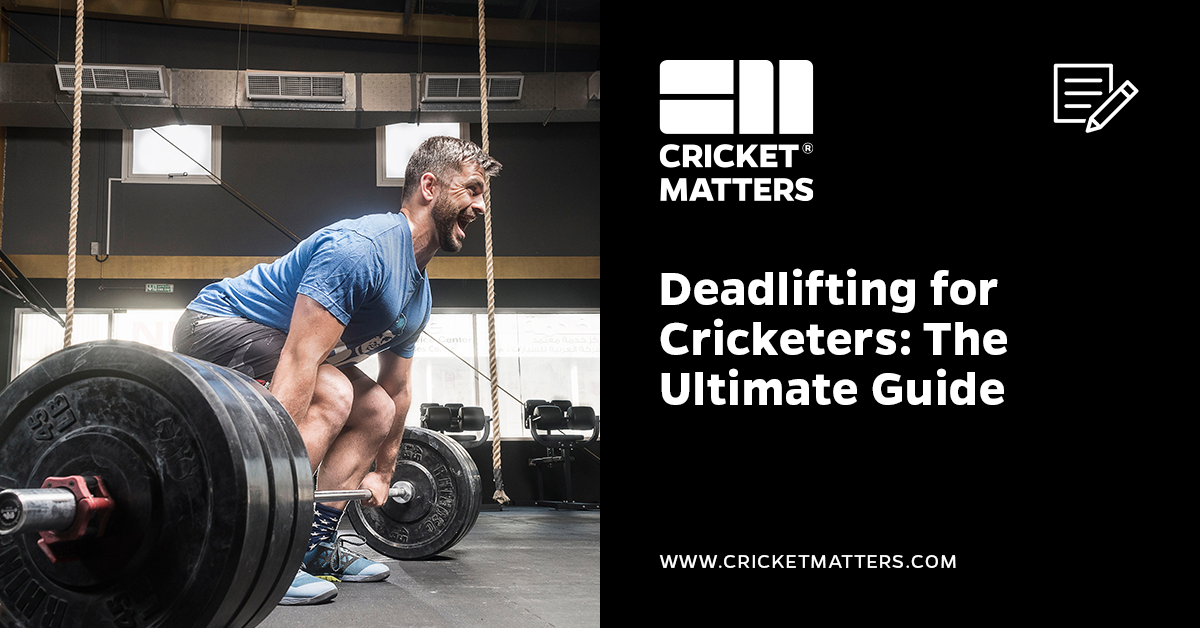
![[Case Study] Advanced Hiit Training Plan for Cricketers 4 Hiit Training for Cricketers](https://www.cricketmatters.com/wp-content/uploads/2024/04/HIIT_Training-1024x536.png)
